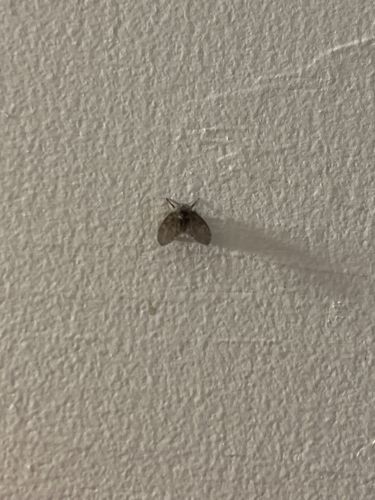Drain Fly (or Moth Fly, Filter Fly, Sewer Gnat)
Scientific Name: Psychoda spp. (most commonly Psychoda alternata or Psychoda cinerea)
Order & Family: Order: Diptera, Family: Psychodidae
Size: Typically 1.5 to 5 mm (0.06 to 0.2 inches) in length.

Natural Habitat
Drain flies thrive in moist environments rich in decaying organic matter. Indoors, they are commonly found in bathrooms, kitchens, and basements, breeding in sink drains, floor drains, shower traps, and any location with stagnant water and organic buildup. Outdoors, they can be found in sewage treatment plants, septic tanks, compost piles, and marshy areas.
Diet & Feeding
Adult drain flies do not feed much, if at all, but may ingest liquids. Larvae feed on decaying organic matter, sludge, algae, and microorganisms found in the biofilm lining drains, pipes, and sewage treatment systems.
Behavior Patterns
Psychodidae are often most active during dawn and dusk. Adults are weak fliers and typically found resting on surfaces indoors, especially near drains or in bathrooms. Their jerky, hopping flight pattern is characteristic. Larvae develop in the slimy film of drains or other moist organic matter.
Risks & Benefits
Potential risks include being a nuisance, especially in large numbers. While they do not bite or transmit diseases in the same way as mosquitoes, they can be a mechanical vector for bacteria or pathogens if they move from contaminated areas (like sewers) to food preparation surfaces. For sensitive individuals, inhalation of dead drain fly particles can sometimes trigger allergic reactions or asthma. Benefits are minimal from a human perspective, but their larvae do play a role in breaking down organic matter in their natural habitats.
Identified on: 8/24/2025